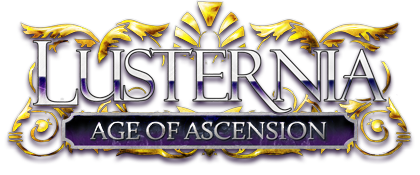Pain and the Psychological by Sapphira
Winner for February 2021
Pain and the Psychological
When one considers the concept of pain and the teachings of Nifilhema, Queen of Insufferable Cruelty, the physical naturally leaps to mind. Torture and atrocities of the flesh, sadism, and physical agony - all of these come under her teachings and are appropriate for her scions and Magnagoran citizens alike to understand, but they do not represent the whole of her wisdom, nor every form that pain can take.
Most commonly we focus on physical hurts, but let us consider that form of pain we cannot see, yet cuts as keenly as any blade - the mental, or the psychological. Emotional turmoil, both self-inflicted and caused by others, is an often-overlooked tool in the arsenal of the Queen's devout. Doubt, envy, uncertainty, and loneliness, for example, are subtle but when wielded by the skilful, cause unseen wounds that fester and ache to great effect.
Is there a pain more sharp than that of unrequited love? To long, to ache and despair? Consider Lord Ashtorath, and his well-known desire for Nifilhema. To all common knowledge, she has never returned his affections, and yet nor is there record of her cutting him free of the bonds of his own yearning. Instead, it can safely be assumed she allows him to keep wanting, perhaps even fanning the flame of his desire, all the while never returning his feelings or giving herself over to them. How this must sting! To want something so deeply, and be eternally denied, with even the faintest spark of hope enough to keep him from saving himself from her cruel grasp.
Such a tactic could well be honed by an individual, tugging the heartstrings of admirers, bewitching and alluring them even, without ever giving satisfaction or submission. Even so, ultimately this pain is one the victim inflicts upon themself. How much sweeter that pain must be to Nifilhema, or to the steward of her arts - watching the victim repeatedly injure themselves, like a ship crashing upon jagged rocks - rending themselves where no one can see, but in a very real and painful way.
While unrequited love is a keen pain, it is far from the only emotional wound one can inflict. Even base insults can injure, though the author would suggest these would be akin to the ham-fisted swing of a drunken fist, but pain is pain. Those who would study the practices of pain infliction would do well to determine the cracks already existent within an individual - sliding a verbal blade into the already present wound of an insecurity could rent it open with agonising accuracy. A subtle jab at the appearance of the vain perhaps, casually stoking the jealousy of a spouse, suggesting ones deepest, darkest fears are indeed well-founded and coming to pass - these can cause as much pain and damage on a person as a blade upon the flesh.
Ultimately there is no right or wrong to pain, either something hurts or it does not. However, the teachings of Nifilhema are not so shallow or one-dimensional. Art and skill so well honed that it is beautiful, that is what sets her apart. Any foolish hack can kick a shin or call someone a goat-kissing orc - and indeed all her pupils must start somewhere - but the satisfaction to be gained from her ways is found in art and beauty, and in wielding one’s tools with skill, subtlety and decisiveness.
A blade could slice a throat to bring about pain, quickly followed by death. Effective to end one's enemy, but that is not the Queen's art. Suffering and prolonging such a result is her joy, drawing out each agonised scream, each despairing wail. Imagine the satisfaction of a victim begging for the release of death, how sweet that must be to one's ears! Complete surrender to your will, to your art - only for you to draw further anguish before unknown from the victim. There is where the pleasure of her work comes - in the skill, in the subtleties, and the prolonging of the inevitable.
How does one apply such a concept to that which is unseen? It would be rather simple to compose a treatise on methods of physical torture, and how to keep the victim alive and unconscious to feel and endure a litany of gruesome techniques, but doing similar for mental anguishes seems a larger task. Every mortal creature, on some level, has an understanding of how to be cruel, and indeed it is something that needs to be overcome by the lesser nations to avoid it, being a natural inclination, but creating a mental work of art is less documented and indeed, more taboo, the author would suggest even within the liberated world of Magnagora.
Determine the weakness, the fault-lines within an individual. That is the first step. Knowing the physical pressure points opens options for applying pressure; by the same nature, knowing a person's invisible weak points does the same. Are they proud? Vain? Prone to jealousy or envy? Do they have strong sympathetic ties, or people held close to their hearts? Do they have as yet unrealised desires or ambitions? Are there secrets lurking in their proverbial closets? No artist performs a masterpiece on their first stroke of a paintbrush, and as such we should practice our methods and techniques. Research mortal nature and its failings and learn the signs that reveal that which people try to keep hidden, for that may present an opening for our barbs.
Emotional pain and turmoil open avenues for suffering that can endure far beyond physical ailments. Systematic and clever applications of various mental afflictions can even lead to a lifetime of ever-present agony, as the victim themselves help to extend the anguish. Consider the previous example of a love unreturned – most individuals, in time, would recognise the futility of their desires and eventually move on from them, saving themselves from further vulnerability in this area. Doing so effectively removes the once-victim from the same harm. And so, an individual seeking to exploit an attraction would do well to recognise when they ought to make sacrifices of their own, for the greater long-term abuse. This could be, for the present example, knowing when to renew hope through a calculated caress or even a taste of that which the victim desires – enough to keep them desperately clinging.
Only a selection of emotional agonies have been touched on in this composition, as a general overview for both the adherent of Nifilhema, and those seeking to better understand an aspect of her ways. Pain and suffering can and do take many forms, from many sources and in many different ways, and indeed are not solely the purview of the Demon Lady. Turning these things into art and beauty are what set Nifilhema apart, as well as those that revere and serve her. This writing has also focused on the intentional inflicting of anguish upon another; the author would however like to note that this too is only a piece of the puzzle the Queen presents, and a common misconception that pain is only for others and never to be endured or embraced. The scions of Nifilhema know better.

